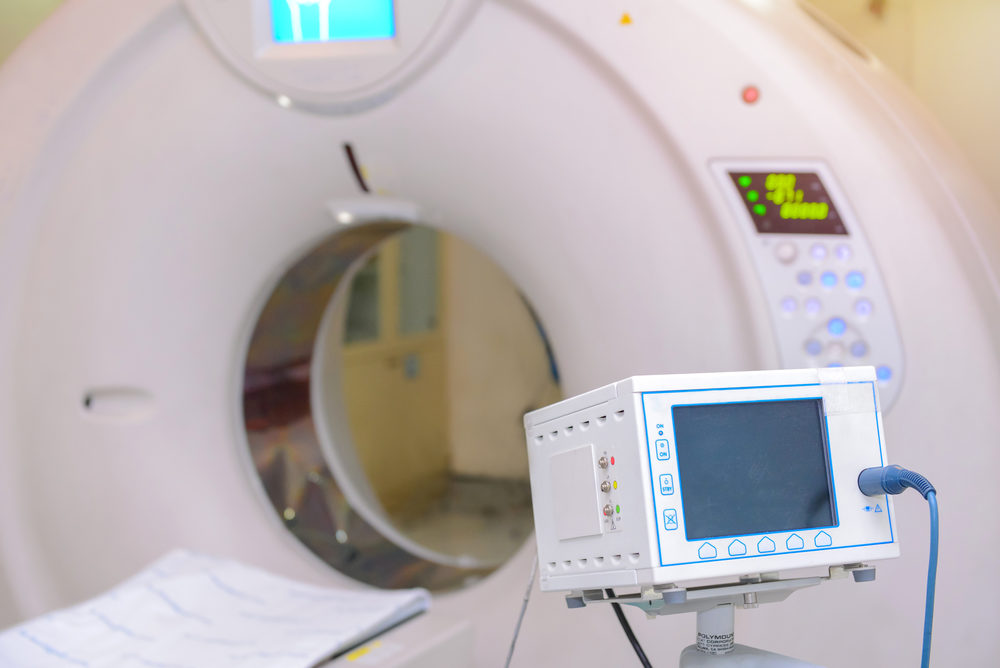Children’s Brain Structures May Affect Their Vulnerability To Gadolinium Retention: Study

While researchers continue to examine the factors that may impact the risk of gadolinium retention from MRI contrast dyes, a new study suggests that very young children may be at a particularly high risk of being left with deposits of the toxic metal in their brains.
Gadolinium-based contrast agents are used during MRI and MRA exams to help enhance the images, and manufacturers have maintained for years that the toxic metal is safely processed out of the body of individuals with normal kidney function. However, in recent years concerns have emerged about the risk of gadolinium deposition, with studies finding that some users are left with remnants of the metal in their brain, or other parts of the body, long after receiving the contrast dye.
In a study published late last month in the medical journal PLoS One, researchers from Poland and Spain indicate that the developing brains of young children may make them more susceptible to retaining gadolinium after the age of two. The findings also somewhat refute data that has suggested only certain types of gadolinium contrast dyes are retained in the body.

Did You Know?
Millions of Philips CPAP Machines Recalled
Philips DreamStation, CPAP and BiPAP machines sold in recent years may pose a risk of cancer, lung damage and other injuries.
Learn MoreResearchers conducted a retrospective study involving 43 children who received more than four injections of gadolinium-based contrast agents (GBCAs) during MRI examinations between a period of eight and 24 months. They then looked at signal intensity from MRI scans.
Areas of increased signal intensity are seen by some researchers as signs that gadolinium, which is used to enhance MRI imaging scans, has been retained in the brain. In this study, researchers used macrocyclic gadolinium contrast dyes, which have previously been seen as less likely to cause retention than older, linear gadolinium contrast dyes.
According to the findings, there was a change in the signal intensity in children before and after the end of the myelination process, which is when nerve endings form a myelin sheath around them to increase the speed of nerve impulses. That process completes around the age of two. The findings indicated an increased signal intensity from gadolinium retention after that process completed.
“Maturation of the brain may affect both signal intensity of brain structures and susceptibility to GBCAs; thus, assessment of signal intensity of the brain structure should be conducted taking into account the age of a child,” the researchers concluded.
The study also found that macrocyclic gadolinium dyes, like Gadavist, ProHance and Dotarem, may leave traces of gadolinium in the brain just like linear gadolinium dyes, such as Magnevist, MultiHance and Omniscan.
Gadolinium contained in MRI contrast dyes has to be be put through a process called chelation, which is supposed to prevent the toxic metal from being absorbed into the body, allowing it to pass safely with other waste products. There are two methods to do this, which divides contrast dyes into two categories: linear and macrocyclic gadolinium contrast dyes.
Linear gadolinium contrast agents use a process that wraps the gadolinium ion in an elongated organic molecular ligand, like wrapping a chain around a ball. Macrocyclic gadolinium contrast agents surround the gadolinium ion in a cage-like molecular structure.
Macrocyclic gadolinium is considered to have a more stable structure, which means that it is less likely to lose chelation and thus more likely to be passed through the body without being deposited in organs than linear ionic gadolinium contrast dyes.
A number of studies in recent years suggest that linear gadolinium contrast agents are more likely to leave gadolinium behind in the body, which suggests they may be more likely to result in a series of painful and debilitating symptoms commonly referred to as “gadolinium deposition disease,” which may leave individuals with persistent headaches, bone and joint pain, reduced cognitive function and other side effects.
Even among individuals with normal kidney function, reports of MRI contrast dye reactions have emerged, with users indicating they have been left with persistent headaches, cognitive issues, joint pain and other side effects due to a buildup of gadolinium in their body.
Manufacturers of linear contrast agents now face a growing number of gadolinium retention lawsuits, alleging that users and the medical community were not adequately warned about the risk of developing gadolinium deposition disease, which may cause persistent headaches, bone and joint pain, memory problems, cognitive issues, fibrosis of internal organs, bones and skin.
Get more articles like this sent directly to your inbox.
"*" indicates required fields






0 Comments